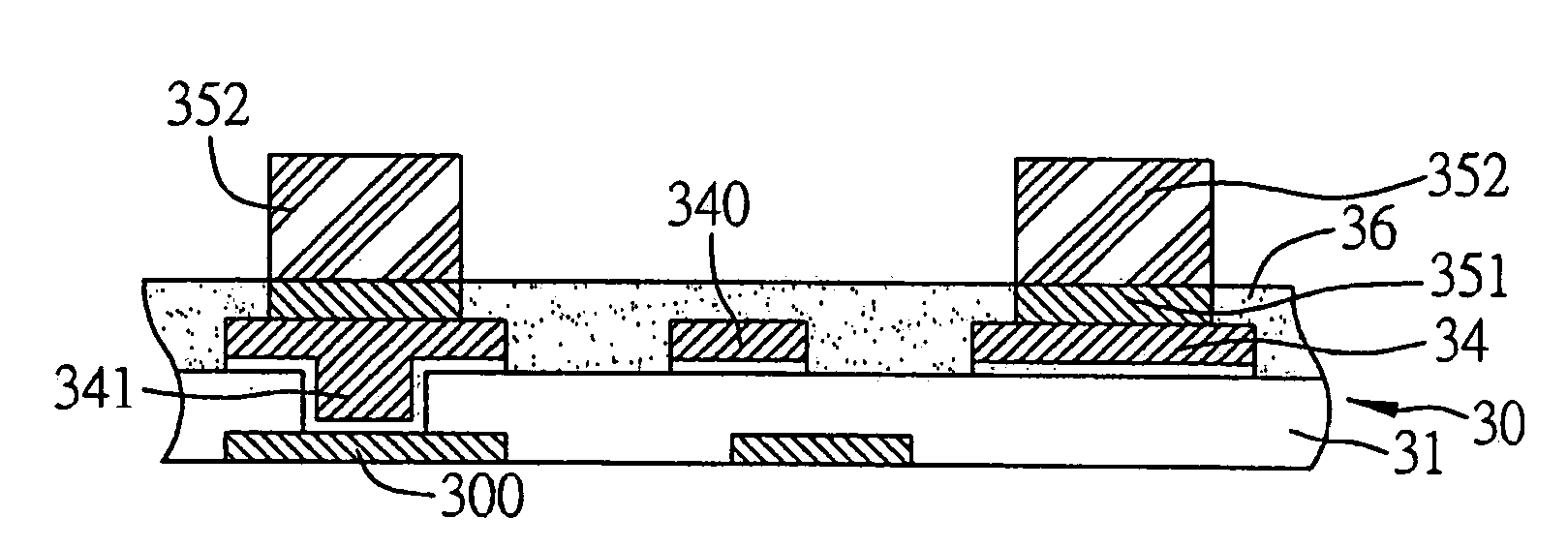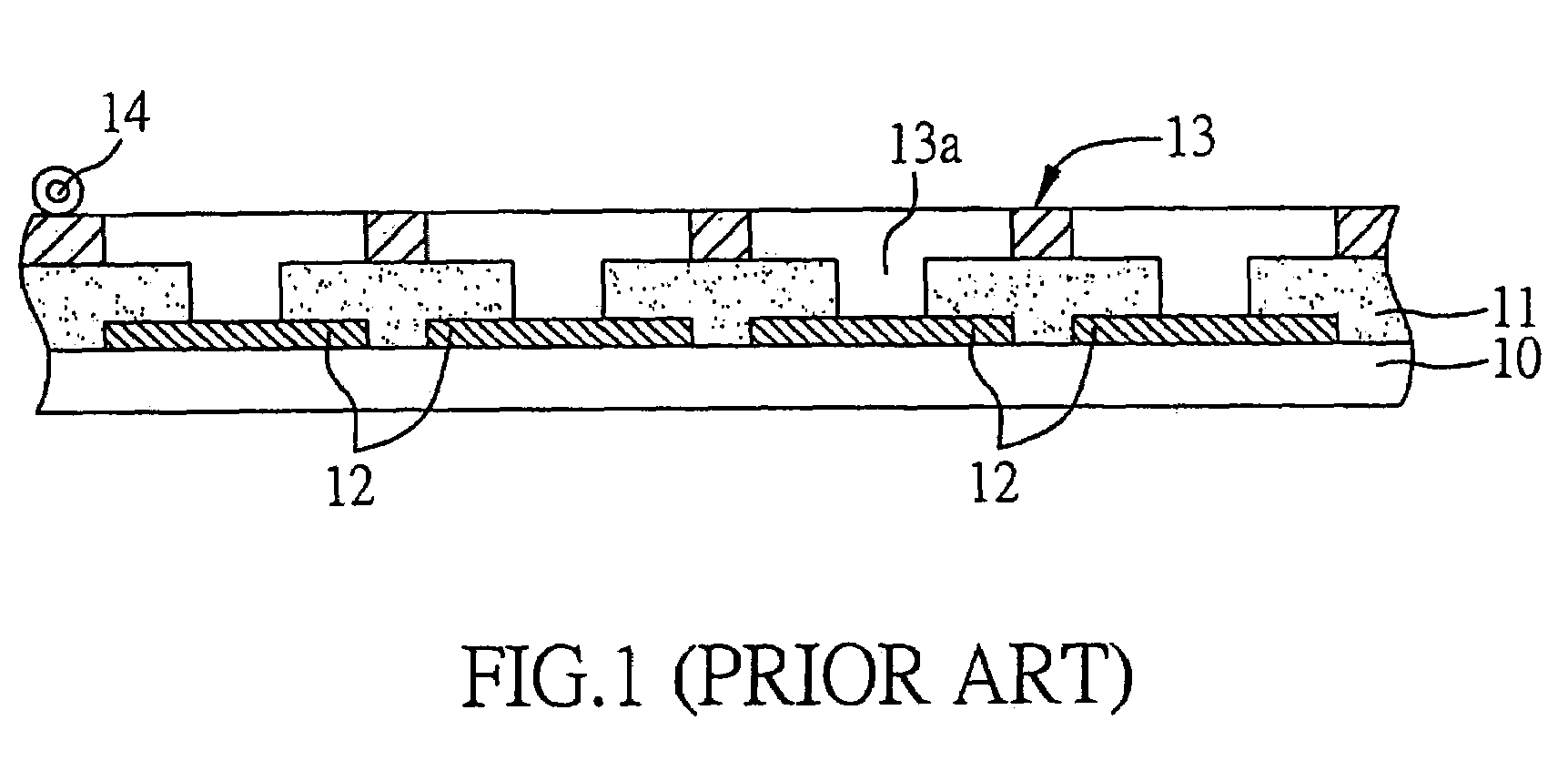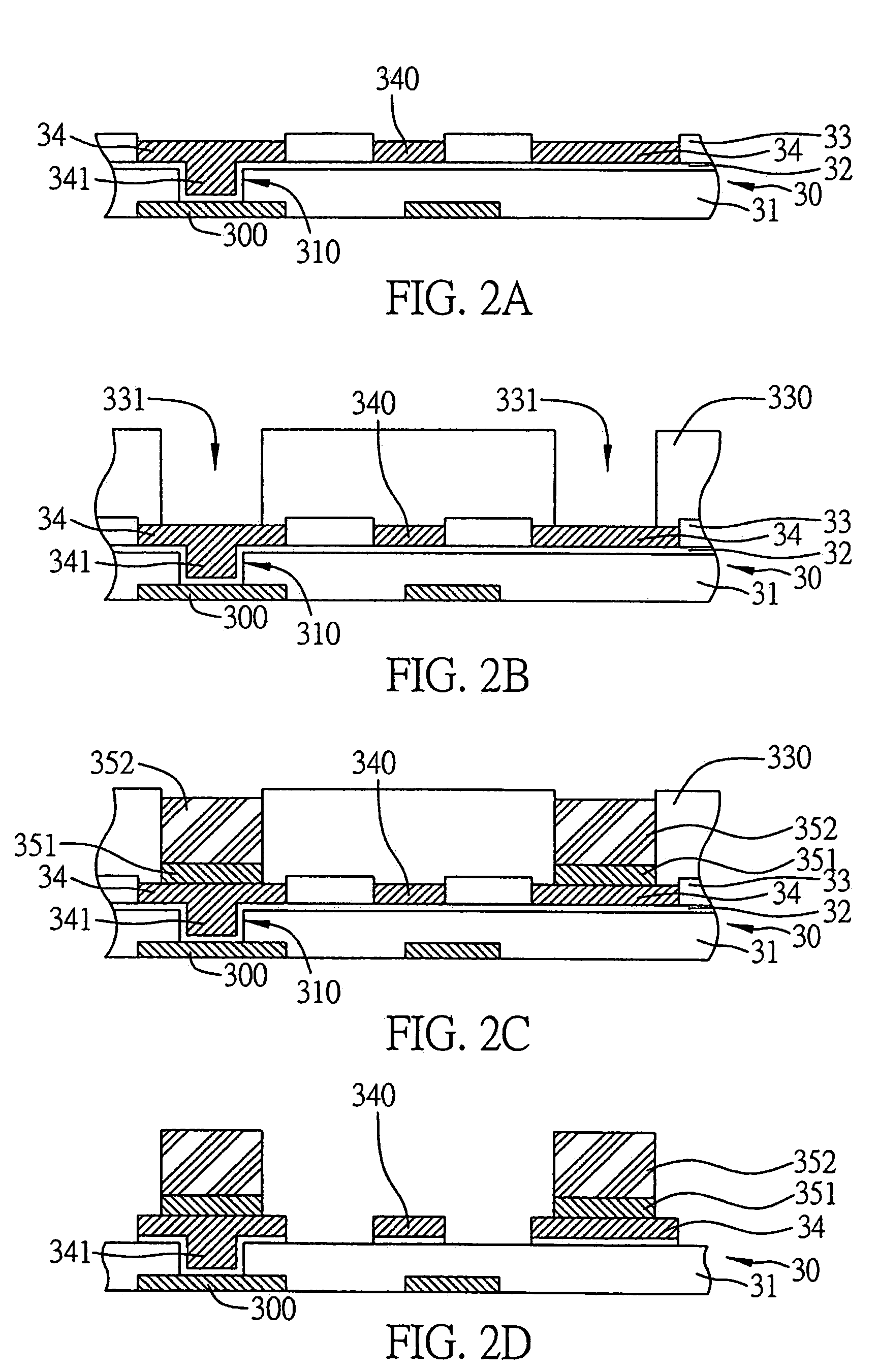Method for fabricating electrical connection structure of circuit board
a technology of electrical connection structure and circuit board, which is applied in the directions of resist details, printed circuit aspects, and semiconductor/solid-state device details, etc., can solve the problems of solder bumps, difficult fabrication of stencils, and alignment problems, so as to avoid alignment problems, reduce the size of exposed conductive pads, and increase the bonding strength of conductive materials
- Summary
- Abstract
- Description
- Claims
- Application Information
AI Technical Summary
Benefits of technology
Problems solved by technology
Method used
Image
Examples
Embodiment Construction
[0019]FIGS. 2A to 2G show a method for fabricating an electrical connection structure of a circuit board according to a preferred embodiment of the present invention.
[0020]Referring to FIG. 2A, during a surface circuit forming process of a circuit board 30 having a circuit layer 300 thereon, a plurality of openings 310 are formed in an insulating layer 31 applied on a surface of the circuit board 30 to expose portions of the circuit layer 300, wherein the portions of the circuit layer 300 serve as connection lands for electrically interconnecting other circuit layers. It is to be understood that FIG. 2A to FIG. 2G only show the circuit layer 300 formed on the surface of the circuit board 30. In reality the circuit board 30 comprises the other interconnected circuit layers thereunder (not showen in the figs). Then, a conductive layer 32 is formed on a surface of the insulating layer 31 and in the openings 310, and is partly connected to the portions of the circuit layer 300 of the ci...
PUM
 Login to View More
Login to View More Abstract
Description
Claims
Application Information
 Login to View More
Login to View More - R&D
- Intellectual Property
- Life Sciences
- Materials
- Tech Scout
- Unparalleled Data Quality
- Higher Quality Content
- 60% Fewer Hallucinations
Browse by: Latest US Patents, China's latest patents, Technical Efficacy Thesaurus, Application Domain, Technology Topic, Popular Technical Reports.
© 2025 PatSnap. All rights reserved.Legal|Privacy policy|Modern Slavery Act Transparency Statement|Sitemap|About US| Contact US: help@patsnap.com



